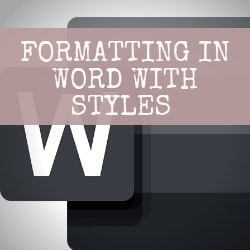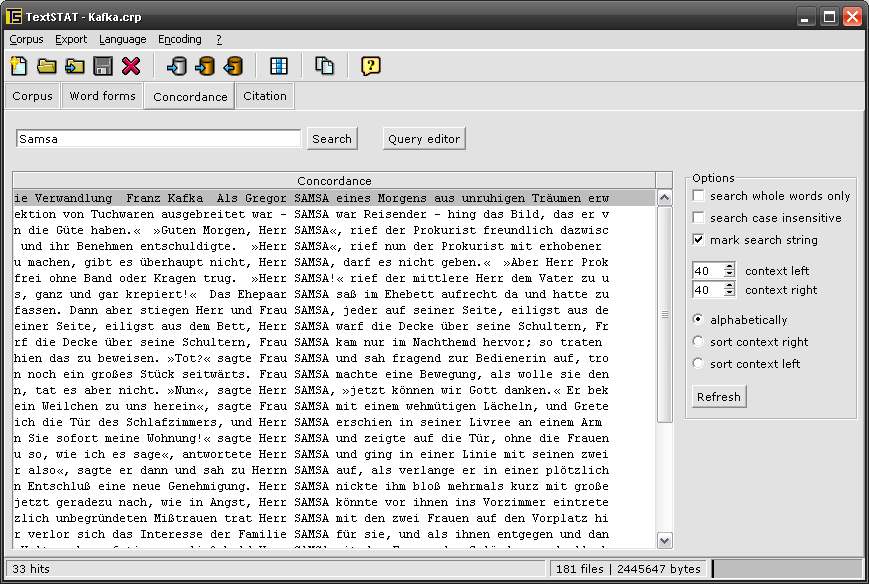|
Fresh eyes on a piece of writing is ideal. Sometimes, however, the turnaround time for publication precludes it. Other times, the return on investment just won’t justify the cost of hiring a professional proofreader, especially when shorter-form content’s in play. Good enough has to be enough.
Here are 10 ideas to help you minimize errors and inconsistencies.
Checking our own writing rarely produces the same level of quality as a fresh pair of eyes. We see what we think is on the page, not what is on the page. That's because we're so close to the content.
I'm a professional editor and I know that when I don't pass on my blog posts to one of my colleagues there are more likely to be mistakes. It's not that I don't know my craft but that I'm wearing a writer's hat. Sometimes, getting pro help isn't an option. So what can you do to minimize errors and inconsistencies? Here are 10 tips.
Style guides help you keep track of your preferences, including hyphenation, capitalization, proper-noun spelling, figures and measurements, time and date format.
2. Use a page-proofs checklist
This pro-proofreading checklist (free when you sign up to The Editorial Letter) helps you spot and identify layout problems in designed page proofs (hard copy or PDF). It’s based on the house guidelines provided by the many mainstream publishers I've worked for.
3. Run PerfectIt
PerfectIt is affordable software that takes the headache out of consistency checking. And because it’s customizable, it will help you enforce your style preferences and save you time. It’s a must-have tool for writers and pro editors.
4. Use find-and-replace in Word
Microsoft Word’s onboard find-and-replace tool enables you to locate and fix problems in your document quickly. This free ebooklet, The Author’s Proofreading Companion, includes a range of handy strings and wildcard searches.
5. Set up styles in Word
Word's styles palette ensures the different elements of your text are formatted consistently. This tutorial shows you how to set up, assign and amend styles. It'll save you heaps of time whether you're working on business documents, web copy, short stories or novels.
6. Trade with a colleague
If you want fresh eyes but budget's an issue, swap quality-control checking with a colleague or friend in the same position. Pick someone who has a strong command of language, spelling and grammar.
Even if they're not a professional editor, they're wearing the hat of the reader, not the originator, and that means they'll spot things you missed. 7. Tools that locate inconsistent spelling
Here are 2 tools to help you locate inconsistent spelling:
8. Run The Bookalyser
The Bookalyser analyses a text for inconsistencies, errors and poor style: 70 different tests across 17 report areas in about 20 seconds, for up to 200,000 words at once. It works on fiction and non-fiction, and for British and American English.
9. Run Word’s onboard Check Document tool
Microsoft Word has an onboard document-checking tool that flags up potential spelling and grammar problems. It's not foolproof (no software is) but it's a second pair of digital eyes that's available at a click.
Go to the ribbon, click on the Review tab, and select the Check Document button. 10. Read it out loud
Read the text out loud. Your brain works faster than your mouth and you might well spot missing words, grammar flops and problems with sentence flow when you turn the written word into the spoken word!
Word also has an onboard narration tool that can do the speaking for you. There’s a tutorial here: ‘Hear text read aloud with Narrator’.
Louise Harnby is a line editor, copyeditor and proofreader who specializes in working with crime, mystery, suspense and thriller writers.
She is an Advanced Professional Member of the Chartered Institute of Editing and Proofreading (CIEP), a member of ACES, a Partner Member of The Alliance of Independent Authors (ALLi), and co-hosts The Editing Podcast.
6 Comments
Vicki Wootton
13/4/2020 05:28:13 pm
Many proofing apps are strictly American English, but I write in British English. Sometimes it is difficult to find a "voice" with a British accent. It's very irritating to hear all the mispronunciations and makes the text sound ludicrous when it's being read aloud. I'm speaking of the Microsoft Word "Read Aloud" app.
Reply
Louise Harnby
13/4/2020 05:51:07 pm
Try the Microsoft Narrator app. You can customize it. George, Hazel and Susan are all UK English.
Reply
11/6/2020 05:36:51 pm
This is GREAT.
Reply
Louise Harnby
11/6/2020 09:13:13 pm
Thanks, Linton! My view is that it's up to writers to decide whether they want help from an editor. If they do, and they like what I offer, they're free to get in touch. If they don't, that's great.
Reply
Nazneen Choudhury
20/7/2020 10:25:33 pm
Thank you! Really appreciate this :)
Reply
Louise Harnby
21/7/2020 09:28:37 am
You're very welcome, Nazneen!
Reply
Leave a Reply. |
BLOG ALERTSIf you'd like me to email you when a new blog post is available, sign up for blog alerts!
TESTIMONIALSDare Rogers'Louise uses her expertise to hone a story until it's razor sharp, while still allowing the author’s voice to remain dominant.'Jeff Carson'I wholeheartedly recommend her services ... Just don’t hire her when I need her.'J B Turner'Sincere thanks for a beautiful and elegant piece of work. First class.'Ayshe Gemedzhy'What makes her stand out and shine is her ability to immerse herself in your story.'Salt Publishing'A million thanks – your mark-up is perfect, as always.'CATEGORIES
All
ARCHIVES
July 2024
|
|
|
|




























 RSS Feed
RSS Feed





